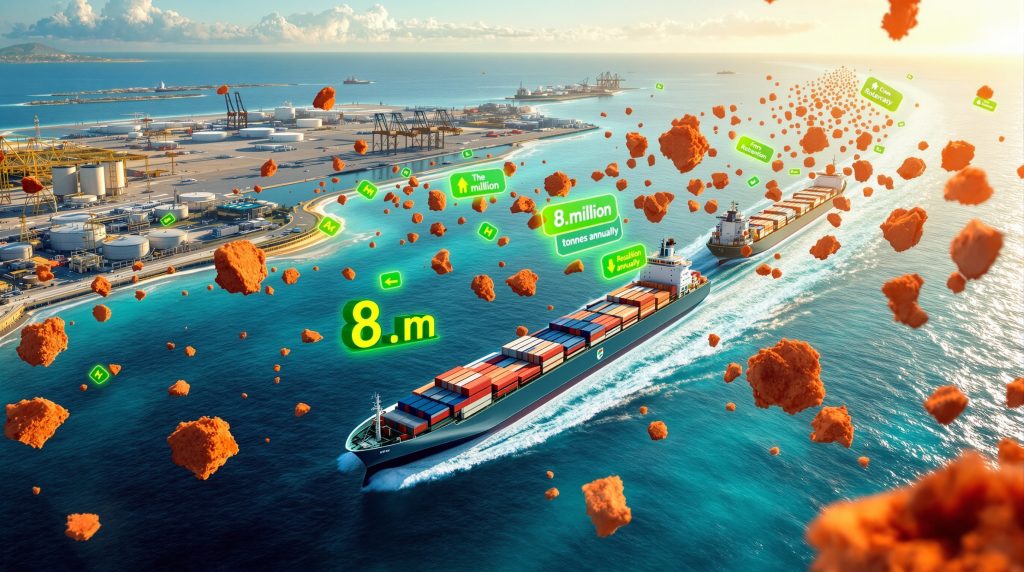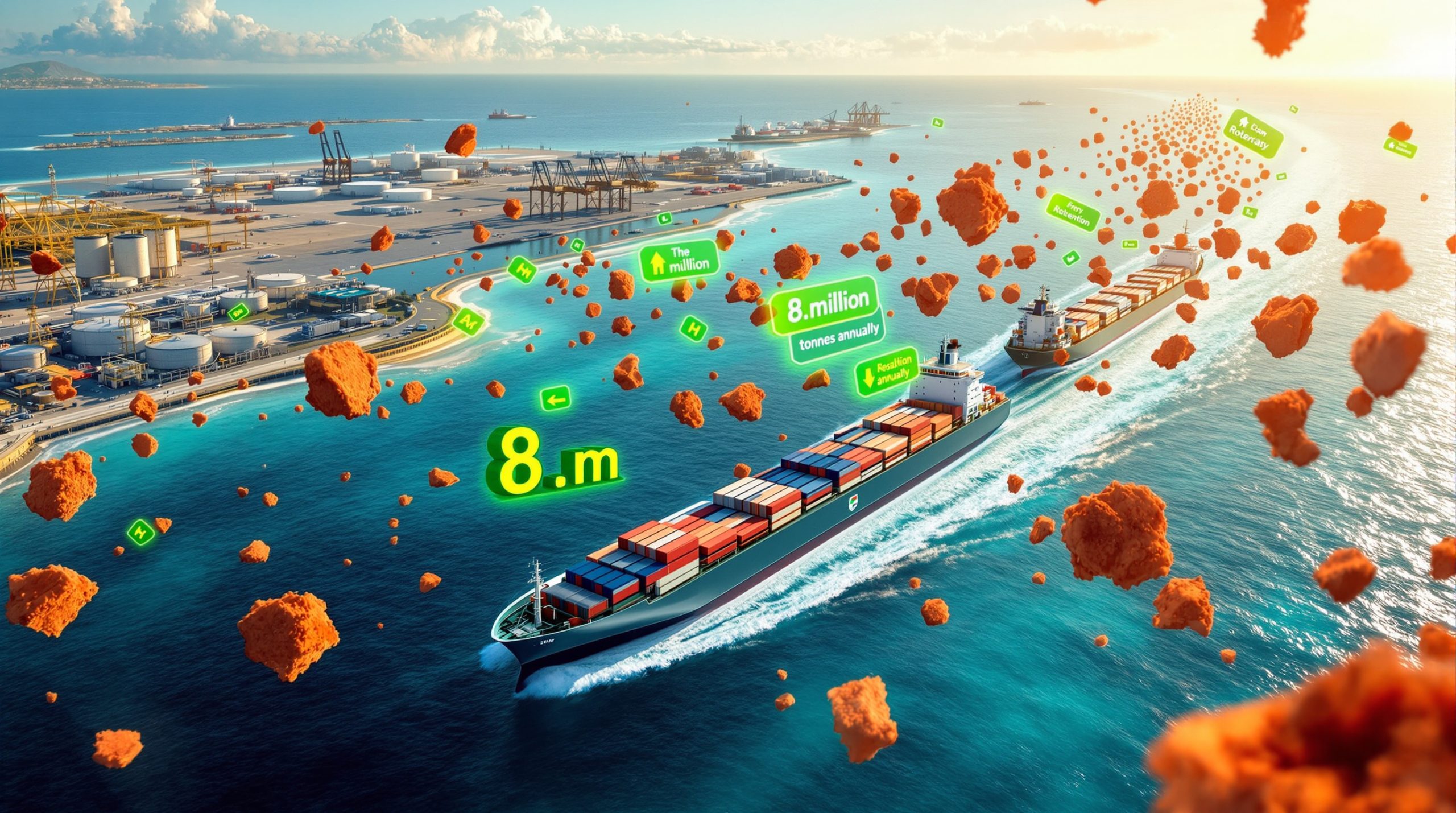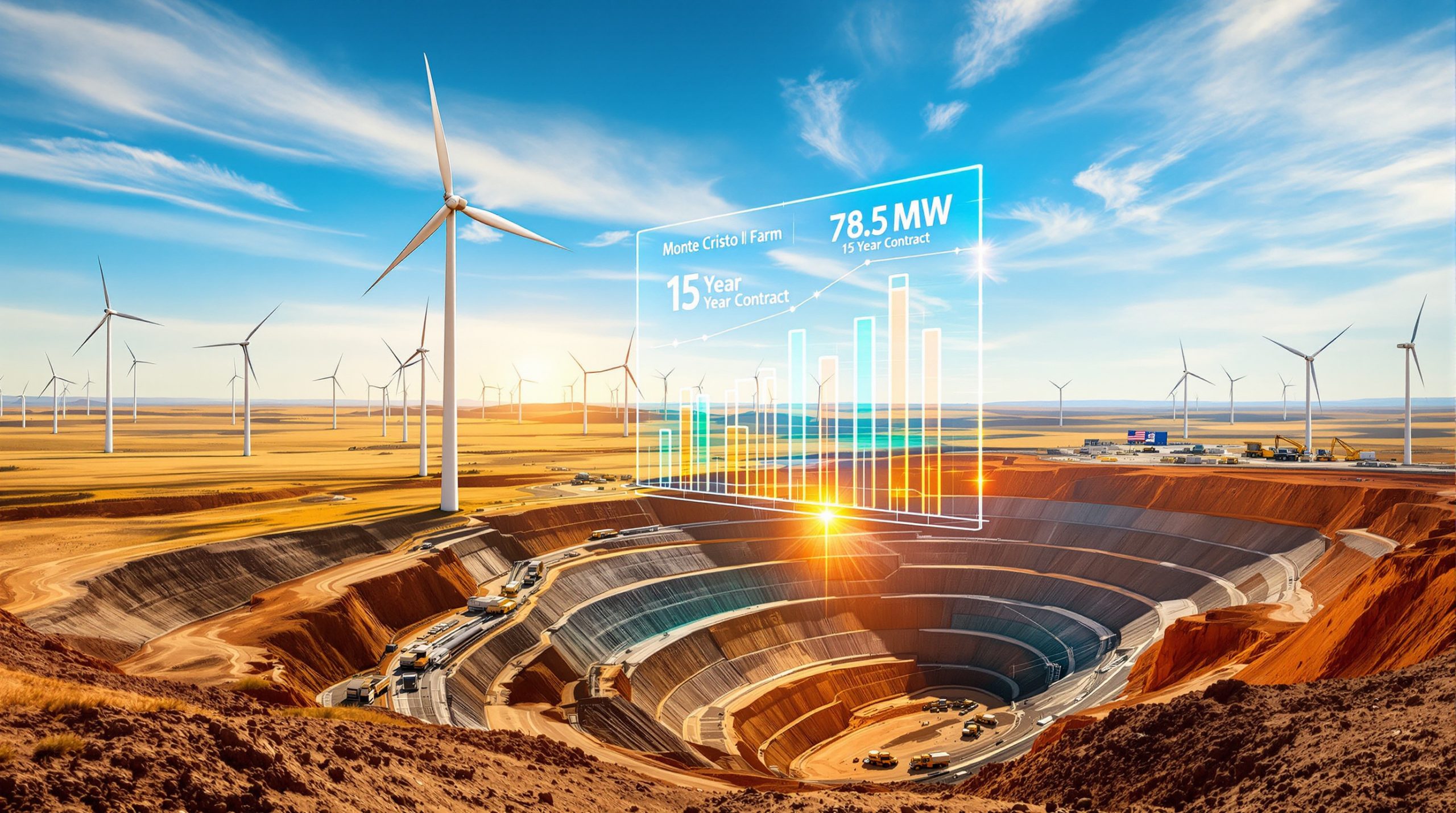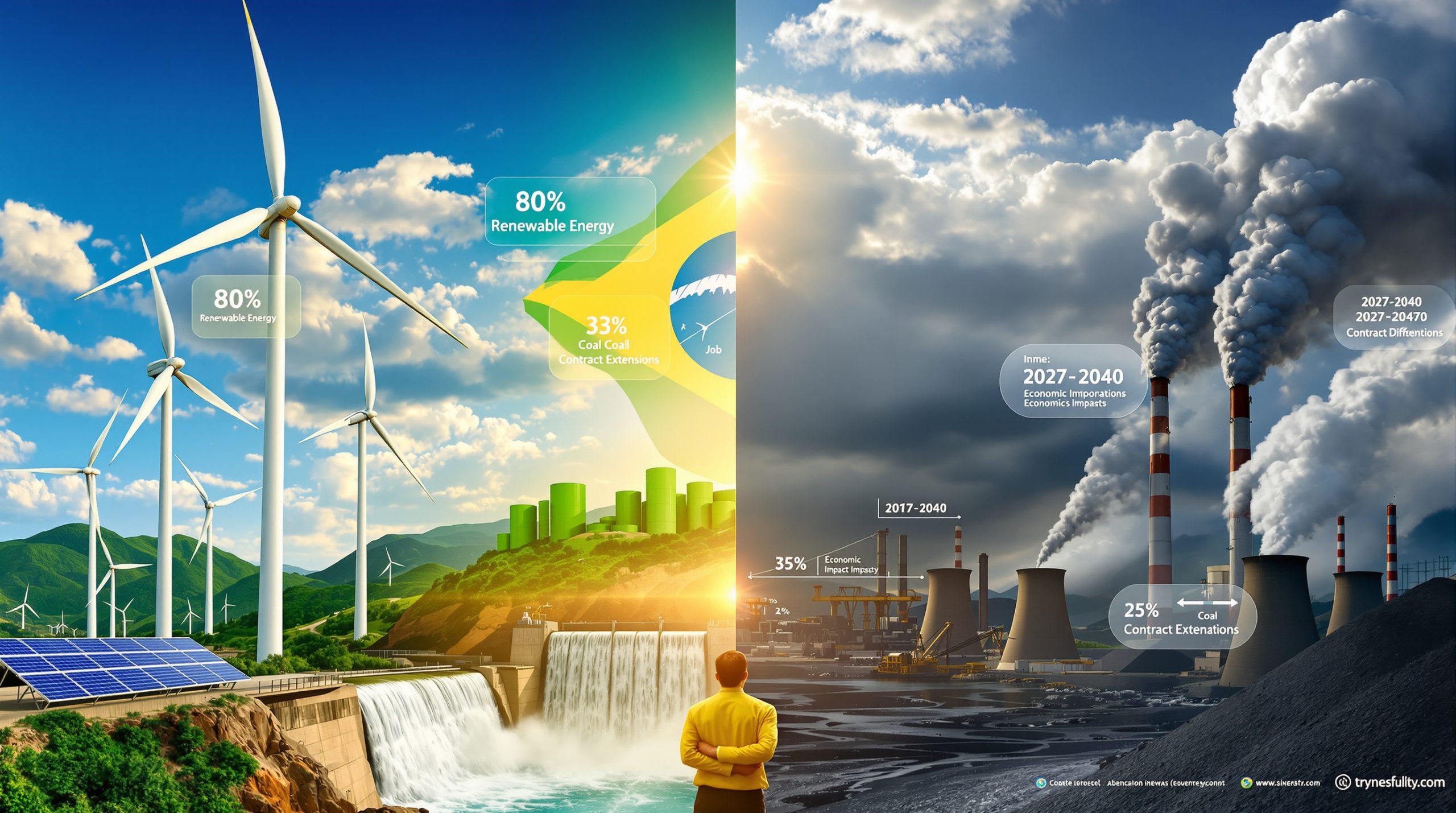The Strategic Corridor Connecting African Resources to European Markets
The South Africa iron-ore trade route to Europe represents a critical artery in global commodity flows, with specialized infrastructure facilitating massive mineral shipments across thousands of nautical miles. The Saldanha Bay port complex serves as the primary departure point for iron-ore destined for European processing facilities, handling the bulk of the nation's seaborne mineral exports to the continent.
This established trade route delivers substantial volumes of high-grade iron-ore to multiple European destinations, with Rotterdam emerging as a key distribution hub for onward transport throughout the European Union. The Netherlands alone receives significant tonnages annually, positioning it as a crucial link in the mineral supply chain.
Table: Key Trade Route Statistics
| Infrastructure Element | Capacity/Volume |
|---|---|
| Primary export terminal | Saldanha Bay, South Africa |
| Main European gateway | Rotterdam, Netherlands |
| Route distance | ~8,000 nautical miles |
| Transit time | 14-18 days typical |
The established shipping corridor benefits from decades of infrastructure investment and operational refinement, creating predictable supply chains that European steel producers rely upon for consistent raw material access. Modern bulk carriers regularly traverse this route, carrying specialized iron-ore grades suited to different metallurgical processes.
Pioneering Zero-Emission Maritime Corridor Development
Revolutionary changes are emerging in maritime fuel technology that could fundamentally transform how commodities move between continents. Recent industry analysis suggests that ammonia-powered vessels could begin commercial operations on established trade routes within the current decade, representing a significant departure from conventional marine fuel systems.
The transition toward zero-emission shipping involves complex technical challenges, including vessel design modifications, fuel storage systems, and port infrastructure upgrades. Ammonia as a marine fuel requires specialized handling protocols due to its unique properties, including toxicity concerns and storage requirements that differ substantially from traditional bunker fuels.
Implementation Phases for Green Shipping Technology:
Phase 1: Technology Deployment
- Initial ammonia-fueled vessel trials
- European port infrastructure development
- Safety protocol establishment
- Crew training and certification programs
Phase 2: Commercial Scale Operations
- Expanded fleet conversion programs
- Regional fuel production capabilities
- Integrated supply chain optimization
- Full route decarbonization achievement
According to the Global Maritime Forum's assessment, the South Africa iron-ore trade route to Europe could achieve full decarbonization through green ammonia by 2026. This timeline represents one of the most ambitious maritime decarbonization initiatives globally.
The technical complexity of ammonia propulsion systems requires significant investment in research and development. Furthermore, comprehensive guidelines for ammonia fuel system safety address critical aspects including leak detection, storage protocols, and emergency response procedures.
Strategic Production Hubs Along Southwest African Coast
The development of green ammonia production capacity requires substantial infrastructure investment and access to renewable energy resources. Three major initiatives are emerging along the southwestern African coastline, each with distinct strategic advantages and development timelines.
Sasol's Green Fuels Initiative
The South African energy company has announced comprehensive green fuels development programs, leveraging its established expertise in synthetic fuel production. Sasol's involvement brings significant industrial experience in large-scale chemical processing and existing relationships with major shipping companies.
Saldanha Bay Production Complex
Co-location of ammonia production with existing iron-ore export infrastructure offers substantial operational synergies. The PTX-SA development initiative aims to integrate renewable energy generation with ammonia synthesis, creating a vertically integrated supply chain for maritime fuel production.
Walvis Bay Marine Fuel Project
CMB.TECH (Conclusion Marine Bunkers Technology) has established itself as a leader in alternative marine fuel development. The company's Namibia mining developments create additional opportunities for cross-sector collaboration in the region.
Projected Infrastructure Requirements:
| Production Hub | Primary Technology | Strategic Advantage |
|---|---|---|
| Boegoebaai Project | Renewable-powered synthesis | Established energy sector expertise |
| Saldanha Bay Initiative | Integrated port operations | Co-located with shipping infrastructure |
| Walvis Bay Development | Marine fuel specialization | Cross-border supply diversification |
The scale of ammonia production required to support a fully decarbonized shipping corridor presents significant technical and financial challenges. Each facility must achieve commercial-scale output while maintaining competitive pricing relative to conventional marine fuels.
Fleet Requirements and Fuel Consumption Analysis
Modern bulk carriers operating on the route typically consume substantial quantities of bunker fuel daily. Converting these vessels to ammonia propulsion requires comprehensive redesign of fuel storage and propulsion systems, with implications for cargo capacity and operational procedures.
Economic and Environmental Impact Analysis
The transformation toward green shipping corridors represents more than technological advancement; it constitutes a fundamental shift in international trade competitiveness. South Africa's position as a testing ground for zero-emission commodity transport could establish precedents for sustainable trade relationships between developing and developed economies.
Strategic Benefits of Green Corridor Development:
- Regulatory Compliance Advantage: Proactive alignment with emerging emissions standards
- Market Differentiation: Environmental credentials may command premium pricing
- Supply Chain Resilience: Diversified fuel sources reduce dependency risks
- Technology Leadership: First-mover advantages in green maritime solutions
The European Union's Carbon Border Adjustment Mechanism (CBAM), which began its transitional phase in October 2023, creates financial incentives for lower-carbon imports. Full implementation by 2026 will impose carbon costs on high-emission goods entering EU markets, potentially providing competitive advantages for shipments using zero-emission transport.
Corporate Environmental Commitments
Over 5,000 companies globally have committed to science-based net-zero targets through the Science Based Targets initiative (SBTi). Many European steel producers and industrial companies are actively seeking verified low-carbon supply chains to meet these commitments, creating market demand for sustainably transported commodities.
Stakeholder Consortium and Investment Framework
The complexity of green corridor development requires collaboration across multiple industry sectors. Key participants include:
- Anglo American: Mining expertise and iron-ore supply commitments
- ENGIE: International energy development and green fuel production
- Freeport Saldanha: Port infrastructure and logistics capabilities
- CMB.TECH: Maritime technology and vessel development
Each stakeholder brings specialized capabilities essential for comprehensive corridor development, from raw material supply to vessel technology and port operations. However, iron ore market challenges continue to influence long-term planning for the route.
Technical Challenges and Infrastructure Solutions
Converting established shipping infrastructure to support ammonia fuel systems requires substantial capital investment and technical expertise. Port facilities must accommodate new fuel handling systems while maintaining operational efficiency for conventional vessels during the transition period.
Saldanha Bay Terminal Upgrade Requirements:
- Ammonia bunkering infrastructure installation
- Specialized storage tank construction
- Advanced leak detection and safety systems
- Enhanced ventilation and emergency response capabilities
- Crew training and certification program development
What Are the Key Vessel Technology Integration Challenges?
Ammonia-powered propulsion systems require fundamental changes to ship design and operation. Key technical considerations include:
Fuel Storage Systems: Ammonia requires either cryogenic storage at -33°C or high-pressure storage at ambient temperature. Both options affect vessel design and cargo capacity.
Engine Technology: Modified or purpose-built engines capable of ammonia combustion with appropriate emission control systems.
Safety Protocols: Comprehensive leak detection, crew protection, and emergency response procedures due to ammonia's toxic properties.
Consequently, ammonia handling requires specialized protocols including continuous atmospheric monitoring, enhanced ventilation systems, and personal protective equipment for crew members.
The International Code of Safety for Ships Using Gases or Other Low-Flashpoint Fuels (IGF Code) establishes mandatory safety requirements for alternative fuel systems in commercial shipping. Compliance requires extensive testing and certification processes.
Initial Operations Strategy
Rotterdam's existing ammonia infrastructure provides a foundation for early operations, with established handling facilities and safety protocols already in place. This allows for initial fleet deployment while South African facilities develop equivalent capabilities.
Competitive Advantages and Market Positioning
Green corridor development offers South Africa strategic positioning advantages in increasingly competitive global commodity markets. As environmental regulations tighten and corporate sustainability commitments expand, low-carbon transport capabilities become significant differentiators.
Market Differentiation Factors:
- Carbon Footprint Reduction: Quantifiable emissions reductions appeal to environmentally conscious buyers
- Premium Pricing Potential: Sustainable transport may command higher commodity prices
- Long-term Contract Stability: Environmental commitments encourage multi-year partnerships
- Regulatory Future-Proofing: Compliance with emerging emissions standards reduces disruption risks
The EU CBAM implementation schedule creates immediate financial incentives for lower-carbon imports. Starting with transitional reporting in 2024 and full financial obligations by 2026, the mechanism will impose costs on high-carbon content goods entering European markets.
Furthermore, understanding current iron ore price trends helps stakeholders evaluate the economic viability of sustainable transport premiums in competitive commodity markets.
How Do Supply Chain Security Benefits Apply?
Diversified fuel supply sources enhance operational resilience compared to single-source conventional fuel dependency. Multiple production hubs across different national jurisdictions reduce geopolitical and operational risks.
Technological Innovation Advantages
Early adoption of ammonia fuel technology positions participating companies as leaders in maritime decarbonization. This technological expertise becomes exportable to other shipping routes and commodity flows worldwide.
Investment Requirements and Returns Analysis
The transition to green shipping requires substantial capital investment across multiple sectors. Infrastructure development, vessel modifications, and operational training represent significant upfront costs balanced against long-term operational savings and competitive advantages.
Global Trade Transformation Implications
Success of the South Africa iron-ore trade route to Europe green corridor initiative could catalyse similar developments worldwide, particularly for other commodity-intensive trade routes. The demonstrated commercial viability of zero-emission shipping would accelerate adoption across diverse maritime applications.
Replicable Corridor Opportunities:
- Australia-Asia mineral shipments: Iron-ore, coal, and LNG routes
- Brazil-Europe agricultural exports: Soybeans, coffee, and mineral commodities
- Trans-Pacific manufacturing supply chains: Container shipping decarbonisation
- Africa-Middle East energy flows: Renewable energy product transport
Each potential corridor presents unique challenges related to distance, cargo types, port infrastructure, and renewable energy availability for fuel production. In addition, renewable energy solutions in mining sectors provide complementary infrastructure development opportunities.
Technology Transfer and Knowledge Sharing
Proven solutions developed for the route become applicable to diverse maritime contexts. Technical expertise in ammonia fuel systems, safety protocols, and operational procedures creates exportable intellectual property.
What Economic Development Benefits Emerge?
Green corridor development stimulates economic activity across multiple sectors, including renewable energy, chemical production, port services, and maritime technology. The initiative positions African nations at the forefront of sustainable trade infrastructure development.
Long-term Market Evolution
The corridor represents early-stage development in what could become standard practice for international commodity trade. As carbon pricing mechanisms expand globally and environmental regulations tighten, zero-emission transport may transition from competitive advantage to market requirement.
Investment Models and Financial Frameworks
Successful development of the corridor creates replicable financial models for green infrastructure investment. Public-private partnerships, international development funding, and carbon credit mechanisms could be applied to similar initiatives worldwide.
Future Maritime Trade Architecture
The South Africa iron-ore trade route to Europe initiative extends beyond a single trade route, representing a fundamental shift toward sustainable international commerce. Success could establish new standards for commodity transport and international trade relationships.
Regulatory Alignment and Compliance
Proactive alignment with emerging environmental regulations provides long-term competitive advantages as international standards evolve. The International Maritime Organization's decarbonisation targets create regulatory pressure for innovative solutions across all shipping sectors.
Moreover, Europe's strategic minerals projects emphasise the importance of sustainable supply chain development for critical raw materials.
How Does Market Psychology Influence Buyer Behaviour?
European industrial companies increasingly prioritise supply chain sustainability in procurement decisions. Demonstrable emissions reductions in transport create marketing advantages and support corporate environmental commitments.
Technological Maturity and Scalability
Proven commercial operation of ammonia-powered bulk carriers accelerates technology adoption across other vessel types and trade routes. Economies of scale in fuel production and distribution improve economic viability.
According to recent analysis by shipping industry experts, the technical feasibility of ammonia-fuelled vessels on this route could be demonstrated as early as 2029, creating a competitive advantage for participating operators.
Disclaimer: The information presented regarding specific project timelines, production capacities, and investment commitments represents industry analysis and forward-looking statements. Actual development schedules and commercial outcomes may vary significantly based on technical, regulatory, and economic factors. Readers should conduct independent due diligence before making investment or business decisions based on this information.
The transformation of established trade routes toward zero-emission operations represents one of the most significant developments in modern maritime commerce, with implications extending far beyond individual commodity flows to reshape global trade architecture.
Ready to Capitalise on Maritime Infrastructure Developments?
Discovery Alert's proprietary Discovery IQ model delivers real-time alerts on significant ASX mineral discoveries, instantly empowering subscribers to identify actionable opportunities in mining and infrastructure sectors ahead of the broader market. Begin your 30-day free trial today and secure your market-leading advantage in emerging commodity opportunities.




